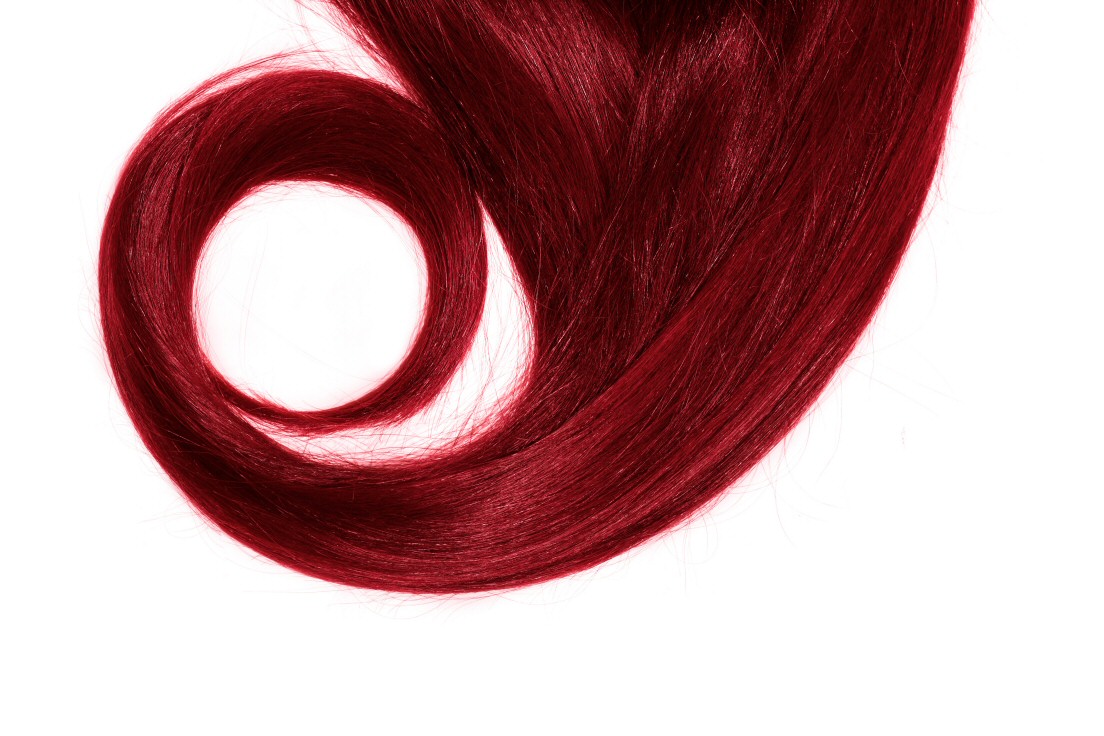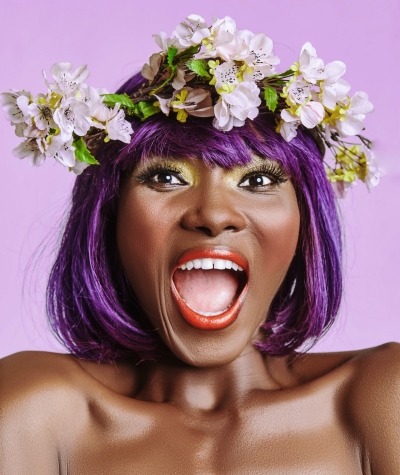In this section:
- Why does our hair have its natural colour?
- What are the types of hair colorant?
- How do permanent oxidation hair colorants work?
- New innovations
Why does our hair have its natural colour?
Hair is given its natural colour by colour pigments produced in the hair root called "melanin pigments". There are two types of melanin pigments that determine hair colour: "eumelanins" which create the darker shades (ranging from reddish-brown to black) and "phaemelanins" which create the lighter shades (pale yellow to red). The hair's natural colour is determined by the proportions of these different pigments.
"Grey" hair is an optical illusion created by a mixture of white (non-pigmented) and pigmented hairs. As hair grows from the root it can have a white base on coloured hair.
White hair is created when melanin pigments are no longer present in the cells that make up the hair - either melanin production stops or the melanin is unable to be transmitted into the hair cells.
What are the types of hair colorant?
There are three basic categories of hair colorants, depending on the duration of effect produced: temporary, semi-permanent and permanent.
 Temporary hair colorants modify the colour of the hair temporarily and is readily removed by washing. These products tend to be ready-to-use (no pre-mixing) and contain "direct" colorants - these colorant molecules are unable to penetrate the hair fibre and settle on the hair surface. The combination of these molecules with the natural hair colour provides the new shade.
Temporary hair colorants modify the colour of the hair temporarily and is readily removed by washing. These products tend to be ready-to-use (no pre-mixing) and contain "direct" colorants - these colorant molecules are unable to penetrate the hair fibre and settle on the hair surface. The combination of these molecules with the natural hair colour provides the new shade.
Semi-permanent hair colorants are made of colorant molecules that are able to penetrate the hair. These colorants settle on and within the scales of the cuticle, becoming established around the cortex without modifying the hair's natural melanin. However, since these molecules are also not bound to the hair protein, the colour gradually fades with washing. The colour normally stays in for up to 6-8 washes.
Oxidation hair colorants are easy to recognise. Normally the pack contains at least two components which have to be mixed together immediately prior to use. Oxidative hair colorants change the natural hair pigments and give the hair - depending on the formulation - either "tone-on-tone" colour (also referred to as "demi-permanents") or "permanent", lasting colour.
Permanent colorants cannot be washed out and this is the more traditional way of permanently changing hair colour around the world. They produce an effect that is resistant to washing and are chosen to provide long term colour changes, ranging from a subtle to dramatic, as well as excellent coverage of "grey" hair.
The two components that are mixed consist usually of a tube that will contain the colorant precursors and an alkaline agent (the 'colorant') and a bottle that contains hydrogen peroxide (the 'developer').
How do permanent oxidation hair colorants work?
The effect of each oxidative dye is based on the following components: an alkalising agent - usually ammonia - and oxidation colouring agents.
The alkaline agent has the effect of opening the outer hair layer so that colouring and oxidising agents can penetrate into the hair shaft more easily.
The starting materials for developing the new colour are called colour precursors which are very small, colourless molecules that only develop their own colour nuance once inside the hair.
The oxidising agent - usually hydrogen peroxide - is mixed with the colour precursors prior to application. The oxygen is released by the reaction between the alkaline agent and the oxidising product. It triggers the actual colour-changing reaction. Large, coloured molecules are formed within the hair's cortex which are resistant to being washed out of the hair. Simultaneously, the oxygen released will lighten the natural melanin pigment in the hair so that the new colour can be seen, effectively replacing the hair's natural colour.
"Tone-on-tone" colorants also include an oxidation step (for example, mixing with peroxide) but does not provide a marked lightening of the hair's natural melanin pigment. Tone-on-tones traditionally enhance or deepen the natural hair colour. The final colour is quite durable and will gradually wash out after approximately 28 shampoos.
New innovations
Hair colouring is one of the oldest cosmetic treatments and one of the most difficult. The dye chemistry and formulation is very challenging.
Recent innovations have occurred in three places. Firstly in the form of the product. In order to get good mixing of the dyes with the developer, the developer and tint need to be thin. However, thin products simply run off the hair. To overcome this, gel networks form within the product on mixing to turn thinner products into a thick and easy to apply final form.
The second area is in chelants. These are normally added to stabilise hydrogen peroxide. However, hair also contains metals such as copper that penetrate from tap water. In turn, these react with hydrogen peroxide to form free radicals that can damage the hair. By choosing special chelants that inactivate copper it is possible to achieve increased hair protection.
The third is in 'conditioning'. In terms of the colorant product itself, innovative conditioning polymers have been incorporated into some hair colorant creams, which are able to penetrate in to the cortex of the hair and help reinforce hair weakened by the colouring process. Furthermore, new formulations for "in box" conditioners are able to give longer term durable conditioning to coloured hair. When hair is coloured with permanent colours a unique fatty acid is removed from the hair surface. This changes the surface from being hydrophobic to hydrophilic and in turn this changes the interaction of uncharged conditioning molecules with the hair surface. As a result new conditioning molecules have been designed that match the surface energy of the hair fibre to help them deposit and spread on the surface.

